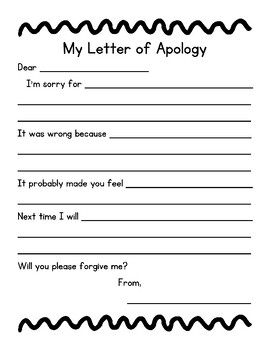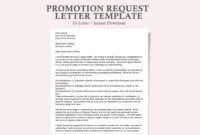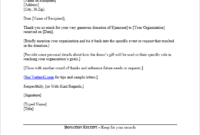We all make mistakes sometimes, it’s a natural part of growing up and learning. For students, navigating the complexities of school life can mean occasionally saying or doing something that crosses a line, whether it’s disrupting a class, missing a deadline, or having a disagreement with a peer or teacher. The good news is that acknowledging these slip-ups and making a sincere apology is a powerful way to learn, show maturity, and mend relationships.
Knowing how to properly express regret can feel a bit daunting, especially when a formal written apology is required. That’s why having a clear, respectful, and effective way to communicate your remorse is so valuable. This guide will walk you through the process and provide an easy-to-use apology letter template for students, ensuring your message is understood and appreciated.
Why Learning to Apologize Matters and What to Include
Offering a genuine apology is much more than just uttering the word “sorry.” It’s a fundamental life skill that demonstrates responsibility, empathy, and respect for others. When you take the time to write an apology letter, you’re not just correcting a wrong; you’re also building your character, strengthening your relationships with teachers and classmates, and showing that you can learn from your experiences. It’s an act of courage that speaks volumes about your integrity.
A well-crafted apology letter shows that you’ve reflected on your actions and understand the impact they had. It moves beyond a simple, fleeting verbal apology and provides a tangible record of your commitment to do better. This can be especially important in a school setting where actions can affect not just yourself, but also the learning environment for everyone else.
Understanding what constitutes an effective apology is key. It’s not about making excuses or trying to shift blame. Instead, it’s about owning your part, expressing sincere regret, and outlining how you plan to prevent similar situations in the future. This thoughtful approach transforms a potentially negative situation into an opportunity for growth and improved understanding.

By including specific details and focusing on the impact of your actions, your apology becomes much more impactful and believable. It helps the recipient see that you genuinely understand the gravity of the situation and are committed to making things right. This level of detail shows true introspection and maturity.
Key Elements of an Effective Apology Letter
- A clear and direct statement of apology.
- Specific acknowledgment of the action or behavior being apologized for.
- An expression of understanding of the negative impact your actions had on others.
- Taking full responsibility for your actions without making excuses.
- A commitment to not repeat the mistake or to make amends if possible.
- A polite and respectful closing.
Ultimately, the goal is to convey sincerity. The person receiving your letter should feel that your regret is genuine and that you have truly learned from your experience. This sincerity is what allows relationships to heal and trust to be rebuilt.
Crafting Your Apology Letter A Step by Step Guide
When you sit down to write your apology letter, think of it as a structured conversation where you clearly and respectfully communicate your thoughts. Start with a straightforward salutation, addressing the person appropriately. If it’s a teacher, use their title and last name, such as “Dear Mr. [Teacher’s Last Name].” This sets a formal and respectful tone from the outset, signaling your seriousness.
The body of your letter is where you articulate your apology. Begin by clearly stating what you are apologizing for. Be specific about the incident or behavior, but avoid dwelling on lengthy justifications or excuses. The focus should be on your actions and their consequences, not on external factors. For instance, instead of saying “I’m sorry I was late because my alarm didn’t go off,” say “I am truly sorry for my tardiness to class.”
Next, express your understanding of the impact your actions had. This is a crucial step in showing empathy. Explain how you know your behavior affected the other person or the situation. For example, “I understand that my talking during the lecture was disruptive to your teaching and to other students’ ability to concentrate,” or “I realize that submitting my assignment late caused extra work for you.” This demonstrates that you have thought about the consequences beyond yourself.
Conclude your letter by taking responsibility and outlining what you will do differently moving forward. This shows a commitment to change and growth. Reiterate your regret and express hope for acceptance of your apology. A polite closing and your signature will complete the letter, reinforcing your respect and sincerity.
A Simple Apology Letter Template for Students
[Your Name]
[Your Address]
[Date]
[Recipient’s Name/Title e.g. Mr. Johnson]
[Recipient’s Address/School Name]
Dear [Mr. Johnson/Recipient’s Name],
I am writing to sincerely apologize for [specific action or behavior e.g. my disruptive behavior in class yesterday afternoon / submitting my assignment late without prior notice]. I understand that my actions [explain impact e.g. disrupted the learning environment for others / caused inconvenience for you in grading].
I take full responsibility for [reiterate action] and deeply regret any frustration or trouble I may have caused. I have reflected on this and understand that [explain why it was wrong or what you learned e.g. it is important to respect classroom rules and other students’ focus / proper time management is crucial for academic success].
Moving forward, I am committed to [state corrective action e.g. ensuring I am more mindful of my actions in class / improving my organizational skills to meet deadlines]. I hope you can accept my apology.
Sincerely,
[Your Typed Name]
Remember to customize this apology letter template for students to fit your specific situation. The more personal and genuine you make it, the more effective your apology will be. Take a moment to review your letter for clarity and tone before submitting it.
Learning to apologize gracefully is a skill that will serve you well throughout your life. It’s about demonstrating humility, taking ownership, and showing a genuine desire to improve. Each time you write a thoughtful apology, you’re not just mending a broken thread; you’re also weaving a stronger fabric of trust and understanding with those around you.
Embracing this practice allows you to move past mistakes with dignity and integrity. It reinforces the idea that challenges are opportunities for growth, helping you to develop into a more responsible and considerate individual ready to face future interactions with greater confidence and respect.



